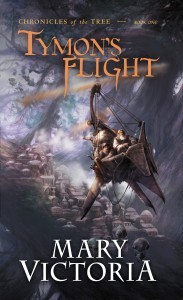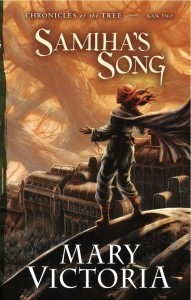Helen Lowe's Blog, page 307
February 18, 2011
In Which, Despite the Exigencies of the Writing Life, I Am Happy …
… because I am working on my book.
Yesterday I reflected on bottom lines and the hard realities that underlie being a writer—the same, in fact, that underpin any business, from the corner dairy to governments, although the perception of the writing life is frequently more idealised and romantic. I will talk more about this, but not today, because today I am happy because I am writing my book.
If you've read recent posts you may feel I have got the "writing" part a little wrong, because I have been talking about the fact that I am currently editing The Gathering of the Lost, the second book in The Wall of Night series. But editing, you see, is still writing. Even picking up the typos and grammatical errors is part of getting the story right, but that's really copy- or proof editing. Nuts and bolts stuff.What the edit is about, for me anyway, is doing your utmost to make your story 'sing.' You already have your characters and the arc of your story, the action of the plot and the motivations and mechanations of your characters.
When you go through the manuscript again, you have the opportunity to give all those aspects of the story more depth: to add shading and nuance to your characters; to make sure you've got the pacing and sequencing of your action 'spot on'; to be sure that you've foreshadowed everything that needs foreshadowing, even if the resolution is not necessarily in this book, but perhaps in the third or even the fourth in the series.
So for me, editing is still a very creative process and I love both the sheer creativity and the sense of "making", but also that feeling (to—very loosely—paraphrase Sam Gamgee in the second Lord of the Rings film; I don't think the lines appear in the book) that you have the opportunity to put something good into this world. (I think Sam said something like that you " … have to believe that there's some good in this world.")
And when I'm doing that, everything else falls away and I really do feel like I'm the right person in the right place at the right time, doing the right thing.
Even if I know that at some stage I'll have to put down my pen again and keep a weather eye on those bottom lines.
February 17, 2011
In Which I Reflect on Bottom Lines …
On Monday, in my interview with Mary Victoria, commenter Blue Rose said:
"Is the series going to stop at 3 books or is there room in it for more? I really liked the concept of the world as giant trees, that was a very original and yet believable idea, and I struggle to find originality these days…"
In reply, Mary made the observation that: "…the publisher, at their end, has indicated willingness in principle but can't justify more actual contracts until the books sell. So the way to have more Chronicles of the Tree books is, well, to buy Chronicles of the Trees books."
I have been reflecting on this, and have come to the conclusion that there is no way in which Mary is overstating the case. Much as we all love the magic of stories, book publishing is a business and like all businesses looks to its bottom lines—and in the end, the continuance of a series, whether based around a world or a character, is totally dependent on whether the books about that world/character sell. End of story.
Only this week I have been told of a writer in another genre who has developed a great character and had her books nominated for serious awards etc — but the publisher has just pulled the plug. The books aren't selling enough copies — so no more character, and in the short term at least, no more author.
Believe me, dear readers, at the end of the day, the bottom line is the only measure of writing success—and if the bottom line isn't good, then the reviews and the awards pretty much count for nothing.
Of course, in order to have a bottom line at all, whether good or bad, you first need outlets where people can buy your books, something that's suddenly looking a lot more … interesting … in Australia and New Zealand with REDgroup's combination of Borders, Angus & Robertson (Aus) and Whitcoulls (NZ) going into receivership.
Very "interesting times" indeed—and wishing that someone might live in them is, I believe, traditionally a curse.
February 16, 2011
CataNetwork Reviewers' Choice Award 2010 for "The Heir of Night"
 The CataNetwork is a US-based site of "websites and communities for the lovers of romance novels."
The CataNetwork is a US-based site of "websites and communities for the lovers of romance novels."
Hold on, you say, The Heir of Night is not a romance novel.
I agree that it is not, but it appears that the CataNetwork reviews titles across a range of genres including Fantasy and reviewed Heir on November 23—with the tagline "I was immediately immersed and mesmerized by this dark epic fantasy…" You can read the full review here.
And yesterday I received an email notifying me that:
"THE HEIR OF NIGHT has won a coveted CataNetwork Reviewers' Choice award for 2010. CataNetwork reviewers have chosen your book as one of the best books that they have reviewed for Single Titles this year. Thank you for sharing your talent with all the readers as you entertain us with your stories."
Needless to say I was taken by surprise–but very pleased! Thank you very much, CataNetwork. 
—
SFX Review:
I also received notice yesterday that The Heir of Night has been reviewed—ahead of its UK release on March 3—by SFX Magazine. And it's a nice review, with the reviewer describing Heir's take on the traditional epic fantasy as "refreshing" and a "well-told tale that gives several new twists to a tried-and-tested formula." Overall, Heir is summed up as an "enjoyable read."
I also note, given my recent guest post on "Writing Strong Women in Fantasy" on Mary Victoria's blog, the SFX reviewer's comment: "Also refreshing is the issue of female soldiers: there's no discussion or worthy treatise on why women are not just equal but head the Earl's Honor Guard — they just are." But you'll have to read my post to know why reading that was an "Ah, yes!" moment for me.:)
—
And then there's "Book Smugglers":
Just to keep everything in perspective, Thea of the Book Smugglers romance & speculative fiction review site disliked pretty much everything about Heir, up until ca. page 260 when she out it down in black despair. You can read the full review here.
So it was kind of nice, as I'm sure you can imagine, having read all that to get the SFX review and notification of the CataNetwork Reviewers' Choice Award 2010 in the post the very next morning.
—
To sum up … I guess from 5-star reviews and Reviewers' Choice Awards, through a "well-told tale" that is a "refreshing" and "enjoyable read", to a "did not finish"—well you'd have to say that it's a "ride" at least!
I set out my "thoughts on reviews" in this post of September 25 2010 and it probably forms my soundest overall response to "the ride" for those who wish to read it.
February 15, 2011
An Interview with Mary Victoria: Book Giveaway Result

 To celebrate the release of Samiha's Song, Mary Victoria put up a signed book set of both Tymon's Flight and Samiha's Song, to be drawn from those who commented on the interview that posted on Monday 14.
To celebrate the release of Samiha's Song, Mary Victoria put up a signed book set of both Tymon's Flight and Samiha's Song, to be drawn from those who commented on the interview that posted on Monday 14.
As indicated below the interview, the winner was to be drawn by Random Number Generator. To further ensure absolute fairness, I absented myself from the drawing process altogether, turning it over to my partner, Andrew, in his capacity as the Treasurer of SpecFicNZ.
Andrew, wearing his official hat, duly ran the numbers and informed me that the winner was:
Shae Ambler
Congratulations Shae! I am sure that Mary will be in touch very soon to get Tymon's Flight and Samiha's Song to you.:)
—
Please note: as set out on Monday, if for any reason the prize has not been claimed by 6.30 am on Saturday 19, I will re-draw.
—
And by the way: The guest author series on Mary's blog, on the topic of "writing strong women", continues today with a post by Philippa Ballantine, the author of Geist.
[image error]
February 14, 2011
Tuesday Poem: "Knowing"—for Valentine's Day
Knowing
You're lucky,
my mother said
in her long dying,
that you have
someone
who loves you.
So much left unsaid
about her life.
But she was right in this:
I am. I do.
Wake every day
to your warm
breathing.
Wonder.
.
© Helen Lowe
Published in foam:e 1 March 2008
.
With yesterday being Valentine's Day, I felt today's Tuesday Poem just had to centre on love and relationship. 
—
To enjoy more Tuesday Poems go to the Tuesday Poem Blog hub here or click on the Quill icon in the sidebar.
February 13, 2011
An Interview with Mary Victoria, Author of "Samiha's Song"—with Giveaway
 Last year, I was privileged to read an advanced reader copy of Tymon's Flight, the first in Mary Victoria's Chronicles of the Tree series, published by HarperVoyager. I subsequently interviewed Mary on Women on Air, Plains 96.9 FM—a fun and lively exchange. Having recently read the newly released Samiha's Song, the second novel in the series, I was very keen to have Mary here for another interview on " … Anything, Really"—an interview that I am very pleased to be able to bring to you today.
Last year, I was privileged to read an advanced reader copy of Tymon's Flight, the first in Mary Victoria's Chronicles of the Tree series, published by HarperVoyager. I subsequently interviewed Mary on Women on Air, Plains 96.9 FM—a fun and lively exchange. Having recently read the newly released Samiha's Song, the second novel in the series, I was very keen to have Mary here for another interview on " … Anything, Really"—an interview that I am very pleased to be able to bring to you today.
The Giveaway:
To celebrate the release of Samiha's Song, Mary is giving away a signed book set of both Tymon's Flight and Samiha's Song, to be drawn from those who comment on the interview today. More giveaway details below the interview.
Mary Victoria was born in 1973 in Turners Falls, Massachusetts. Despite this she managed to live most of her life in other places, including Cyprus, Canada, Sierra Leone, France and the UK. She studied art and film and worked as an animator for 10 years before turning to full time writing. She now lives in Wellington with her husband and daughter. Her first book, Tymon's Flight, was released by HarperVoyager in August 2010. The sequel, Samiha's Song, has just been launched on February 5 at the Weta Cave, in Wellington. You can visit Mary on her blog, here. In recent exciting news for Mary, Tymon's Flight has been nominated for for three different Gemmell awards for fantasy: Morningstar (new talent), Legend (best fantasy) and Ravenheart (best cover.)
And now—to the interview!
—
Helen: Samiha's Song is the second in your Chronicles of the Tree series, following on from Tymon's Flight. I felt that the scope of the story really opened out in this second book—as the author, was that a deliberate plan on your part, or did the story evolve as you wrote it?
Mary: You're kind to say so, Helen. Yes, it was a deliberate plan, though it did depend to some extent on matters outside my control. An interesting shift occurred just as I was beginning to write Samiha's Song, in April 2010. My acquiring editor, Stephanie Smith, contacted me to let me know that Voyager had decided to market the Chronicles of the Tree as adult fantasy. The trilogy had originally been sold as a YA crossover, aimed at ages 12+.
The decision to market to a slightly older audience was a boon and freed me up creatively in many ways. With the shift to an adult market, I was no longer restricted to the classic, coming-of-age palette that defined Tymon's Flight. Although stylistically, the trilogy is fairly unified – Samiha's Song does not contain explicit language, for example – books two and three explore a wider range of themes and content, from self-discovery through to the hard choices involved in taking responsibility for your own life. There are several new characters introduced in Samiha's Song, some of whom are on journeys far darker than Tymon's. Tymon himself is no longer a child in the second story, having made that switch to adulthood in the first book. The characters can make scary mistakes or come to regret their decisions as people do. Nothing is sacred.
Helen: In terms of nothing being sacred, as well as introducing some new and important characters you have also allowed one central character from Tymon's Flight to die. How important is it to you as an author, to have this sort of dramatic ebb and flow in your stories?
Mary: It's incredibly important. I don't think I'd be able to write well if someone said to me, 'you must keep these five characters alive at all costs,' or prevented me from introducing new protagonists where necessary, even at the end of a story. The characters arrive, like Bilbo's uninvited dwarf guests in The Hobbit, when and where they must, in order to take us on an adventure. And they also die when they must, even if it's painful to contemplate.
My husband, in the midst of reading Samiha's Song for the first time, turned to me one evening with an expression of woe on his face. "I didn't expect you to do that!" said he, referring to an event described in the book. "It had to happen," I answered, and went on to explain why. He understood; the expression of woe did not go away, however. And I'm afraid to say I was glad, because woe is precisely the reaction that scene was meant to provoke. If it provoked satisfaction, we'd be in trouble.
That's how it is with a story: it has its own internal logic. Horrible things happen, and wonderful things too, and it must all be allowed to follow its course or else the result feels stilted and artificial.
Helen: Mary, I think of you as being very much a "citizen of the world." To what extent do you think your family background and your own life have influenced the ideas and world views at play in Samiha's Song.
Mary: Thank you, I like the idea of being a citizen of the world, though it's also a wonderful privilege to have a home in NZ. Neither one precludes the other, of course.
My upbringing and family background definitely influenced the ideas and themes at play in Samiha's Song. My mother's side of the family have been inveterate globetrotters for generations, both through force of circumstance and personal choice – because I must say, it does become a habit after a while. They came originally from Azerbaijan, Iran and Iraq. Some of them went into exile in Palestine in the nineteenth century because of their religious beliefs, seen as heretical by authorities at the time. Later generations moved away from Iran in search of an education and livelihood, married people from very different backgrounds and settled in far-off lands. Now, a century later, we're in North America, Europe, South Africa, New Zealand. I spent part of my childhood in Cyprus, Canada and Sierra Leone, among other places.
A history of moving restlessly about does hone certain survival skills: the art of getting along with strangers, the art of suspending judgment. It's hard to be a bigot, to consider oneself pure, right and marked out by manifest destiny when one's ethnic and cultural background is frankly a mishmash. I like to say my left elbow thinks my heathen right ear is going to hell, and my big toe has a fatwa out on my pinkie. Unfortunately for them, they all belong to the same body and have to get along.
That, in a nutshell, is what Samiha's Song is all about. The story deals with the artificial constraints we like to impose on ourselves, the walls we put up when we insist on 'a clash of civilisations' or 'insurmountable differences' between religions and cultures. Samiha doesn't believe the differences are insurmountable and is willing to put her life on the line for that cause. She won't play one side against another. In fact, she rejects the need for sides altogether. Naturally, her idealism gets her into trouble with pretty much everyone.
Helen: Given the book title, it is perhaps not surprising that this second book focuses more on the character of Samiha, and that the narrative point of view shifts between Samiha and Tymon. This is a change in focus from the first book so how did you find it? Was it easy, or challenging?
Mary: By the time I finished Book One, I was yearning to write from the point of view of Samiha. In that sense it was a natural transition, a logical step demanded by story. But then of course I had to listen hard, to find and define Samiha's distinctive 'voice'. I did that by writing her Testament – the passages we see her composing in the very first scene, in the prologue. I wanted to hear Samiha speaking to me through the words she would choose to write herself. (I use the word Testament here in its older form of course, meaning an explanation or statement of belief, rather than the modern legal usage of a will and testament.)
The experiment was a success – when Samiha sat down to write her story in that old fashioned, confessional form, I heard her clearly in my mind, and never stopped hearing her. I began to document her journey and the choices she made, and to understand why she made them. The whole of book two became in essence her Testament, whether told from her own point of view or Tymon's.
That's not to say the process was without hiccups. Samiha was challenging to write in that she has very high moral standards, a preoccupation with Truth with a capital 'T'. It's extraordinarily difficult to make characters like that come to life, as they can so easily slide into preachiness. I tried to keep her true to herself while showing her humanity – the fact that she has moments of self-doubt, or can be overly-critical of others and 'difficult to live with.'
Helen: I think you succeeded very well with avoiding the preachiness and still keeping Samiha a very human character. But I didn't find her overly critical of others—almost the opposite given the circumstances she is dealing with in the book. So can you expand on your earlier comment of "difficult to live with?"
Mary: It's an old and hackneyed concept, not mine, but one I've used as a foil for Samiha's development. It's the noxious assumption that a woman who expresses her opinions clearly and dares to go against the common grain is a 'shrew' and unmarriageable, or worse yet a bad mother. Examples of this category of opinionated women in literature include Antigone and Medea in Greek myth, Katherina in The Taming of the Shrew, etc. The notion that education and self-expression make a woman impossible to live with is of course standard fare in sex-segregated societies. Even Samiha is coloured by these concepts to an extent, shedding them one by one as she 'awakens' to her own potential.
That said, apparent rebelliousness or intractability defines Samiha more in the first book than the second. By the time the events in Samiha's Song are playing out, she has left behind any judgmental attitudes and stands for something wider, freer, and infinitely more dangerous to the status quo. It's one thing to rebel against a power structure and quite another to step outside the bounds of the confrontation altogether, suggesting an alternative advantageous to all. Samiha does not allow herself to be defined by the priests' polemic and as such she is the ultimate threat to them.
Helen: To celebrate the release of Samiha's Song you are hosting a guest author series on your blog on "Writing Strong Women." I feel it would be fair to say that strong female characters, not just Samiha but also the Oracle, Jedda and Jocaste, take centre stage in this second book in the series. What made you take the story in that direction, having started with the focus on Tymon, and other—male—characters such as Oren, Laska and Solis in the first book?
Mary: The "Writing Strong Women" series was a natural extension of the themes in Samiha's Song, and it's great fun and very instructive to hear what everyone has to say on the subject.
As for me, after an entire book devoted to that very classic boy's coming-of-age tale in Tymon's Flight, I wanted to tell at least part of the next story from a female perspective. Although the character of Gardan, the very capable female Freehold judge, does exist in book one, I felt I needed to expand my palette of women characters. So I introduced two strong new contenders in Samiha's Song: Tymon's fellow Grafting student, Jedda, and his powerful and enigmatic teacher, the Oracle of Nur.
A rebel and a survivor, Jedda defies convention in every way. She's a pragmatist, rather than an idealist like Samiha. And she possesses more raw talent for the Grafting than Tymon. How she uses that talent is a key story point and I think makes her a complex and believable person. She is also, with Samiha, the strongest supporting character in the overall story.
In developing the Oracle's personality, I deliberately chose traits that would be highly disturbing to a raw or inexperienced person meeting her for the first time. The Oracle is hard to pin down. Is she good, or is she evil? Is she helping or hindering her students? I wanted a character who turned those easy notions on their heads. The Oracle 'Sees' the future all the time: as a result her attitude towards life is unusual, to say the least.
There are several other important female characters who make an appearance in Samiha's Song. Gardan returns, along with Noni, Oren's sister, who made a very brief appearance in Book One. And we meet Jocaste – but to say more about her would be a spoiler!
Helen: You also expand the "universe" of the Tree in this second book in the Chronicle of the Tree series. Can you tell us more about the "what" and "why" of that?
Mary: Tymon's Flight introduces the concept of the World Tree and paints a picture of human life in the Central and Eastern Canopies. It's very much a practical, physical world, thought out as if the events described were taking place in our own universe – the laws of physics remain unbroken, apart from a few notable exceptions to do with the Grafting, and care is taken to present life in a giant tree as more or less believable and possible. The 'magic' of the Grafting is there, but as yet unexplained. We don't know whether it is sorcery in the classic sense, some form of meditation or spiritualism, or another phenomenon entirely.
In Samiha's Song we, along with Tymon, discover some of the rules governing the Grafting, and the fact that the physical World Tree is not the be-all and end-all of the universe (or multiverse, a more accurate description in this case.) There are other worlds besides Tymon's – mental worlds a Grafter can use to step outside his or her body and the bounds of space-time, effectively predicting aspects of the future. But these other worlds are not simply fancy divination tools or destinations devoid of life. There are creatures native to them and who meddle in turn with the physical world, for good or ill. And the mystic Sap, the force that gives both Grafters and sorcerers their power, may itself be alive …
As you can imagine, tackling all this metaphysics was no easy task in an adventure story. I didn't want the Grafters' trance to become a dry and cerebral affair, without sensual immediacy. So I worked hard to make the world of the Sap visceral. The parallel planes of existence Tymon steps into are just as 'real', tactile and dangerous as his own.
Helen: I really enjoyed the way the world widened out in Samiha's Song and the fresh layers of understanding around the Tree 'verse—you have definitely whetted my appetite for more! I know I will have to wait, but to be honest, I don't mind waiting for 'something good.' I feel certain, too, that like me, a lot of readers out there are going to be enjoying Samiha's Song in the meantime. So to finish, is there any one thought you'd like to leave with Chronicles of the Tree readers?
Mary: Expect the unexpected! As much as things are turned on their heads in Samiha's Song, I believe they are punched inside out, shaken briskly and hung up to dry in book three – tentatively titled Oracle's Fire, and due for publication in September.
Your kind words regarding Samiha are much appreciated… All I can hope for as an author is that others will enjoy reading the books as much as I enjoyed writing them. Which is to say, a great deal!
Helen: Mary, thank you for agreeing to be interviewed here on " … Anything, Really." It has been a pleasure working with you to put the interview together and I wish you all the very best for your continued success with The Chronicles of the Tree.
Mary: Thank you very much for inviting me, Helen, it's a joy to be here.
—
To celebrate the release of Samiha's Song, Mary is giving away a signed book set of both Tymon's Flight and Samiha's Song, to be drawn from those who comment on the interview before I post my Tuesday Poem at 6.30 am NZ time, tomorrow 15 February,(that'll be ca. 12.30 pm on Monday 14, US Eastern Standard Time.) The winner will be drawn by Random Number Generator and posted at 6.30 am on Wednesday 16, NZ time.
Please don't forget to check back after the closing date to see if you've won. If the prize has not been claimed by 6.30 am on Saturday 19, I will re-draw.
February 12, 2011
What I'm Reading: 'The Elegance of the Hedgehog'

Work in Progress: WALL2
Mainly what I'm doing write now is reading the manuscript for The Gathering of the Lost (The Wall of Night Book Two) with my editor's comments in mind—and in general it's rocking along, which is great. I remember reading the ms for The Heir of Night at a similar stage, when I had been away from the story for a time—and finding, when I got to the final confrontation in the book, that I was holding my breath as I read. "How does that work?" I thought. "You wrote this, you know what's going to happen!" But I took it as a good sign that I found the story exciting reading! And I guess it always is a good sign—for any book, but especially for your own manuscript—when you find yourself caught up in the story's flow!
 But I still need a book to read and at the moment it's French author, Muriel Barbery's The Elegance of the Hedgehog. Hedgehog is not SFF or speculative fiction of any stripe at all, but I have been meaning to read it for quite some time—and in fact, I don't exclusively read speculative fiction; far from it! The Elegance of the Hedgehog comes highly recommended—the first three pages of the book comprise glowing reviews and the legend on the cover proclaims that it spent "over a year on the New York Times Bestseller List." So it has to be good, right?
But I still need a book to read and at the moment it's French author, Muriel Barbery's The Elegance of the Hedgehog. Hedgehog is not SFF or speculative fiction of any stripe at all, but I have been meaning to read it for quite some time—and in fact, I don't exclusively read speculative fiction; far from it! The Elegance of the Hedgehog comes highly recommended—the first three pages of the book comprise glowing reviews and the legend on the cover proclaims that it spent "over a year on the New York Times Bestseller List." So it has to be good, right?
Well, not necessarily, but I did find the first few pages intriguing, which is always a good start. I have found the subsequent chapters a little slow going, but I am only about a 1/5 th of the way through, so it's early days. 'Watch this space', as the saying goes.
 Speaking of 'watching this space,' tomorrow I am interviewing Mary Victoria, author of Tymon's Flight and the Chronicles of the Tree series, about Samiha 's Song, the second book in the sequence—which I have read and talked about here. I have very much enjoyed putting the interview together and been fascinated by the discussion around both the world of the Tree and the characters so am excited to be sharing it with you at last.
Speaking of 'watching this space,' tomorrow I am interviewing Mary Victoria, author of Tymon's Flight and the Chronicles of the Tree series, about Samiha 's Song, the second book in the sequence—which I have read and talked about here. I have very much enjoyed putting the interview together and been fascinated by the discussion around both the world of the Tree and the characters so am excited to be sharing it with you at last.
February 11, 2011
International Literary Quarterly: Issue 14 Published

Interlitq 14
Issue 14 of the International Literary Quarterly (Interlitq), A New Zealand Literary Showcase is now published and contains my poems, Australia Post and One Day (from the Ithaca Conversations sequence.) The complete line-up of poets is as follows and includes the current NZ Poet Laureate, Cilla McQueen:
Marisa Cappetta
Laurice Gilbert
Helen Lowe
Cilla McQueen
Harry Ricketts
Ron Riddell
Richard von Sturmer
Niel Wright
Interlitq also contains works of short fiction by:
Coral Atkinson
Sue Orr
I understand that Interlitq Issue 14: A New Zealand Literary Showcase will contain further installments.
But to read the first installment "hot-off-the-press', click here.
What I'm Doing …
Guest posts — you can still check out my post on "All About Character: Writing Strong Women in Fantasy" as part of Mary Victoria's guest author series.
.
Interviews — last week's blog interview was with debut romance author, Beth Anne Miller, and on Monday I'll be talking to Mary Victoria about the newly-released Samiha's Song, so be sure to check back for that.
.

Work in Progress: WALL2
Editing The Gathering of the Lost (Gathering for short, aka The Wall of Night, Book Two)— yup, editing this big pile of paper is all mine to do at the moment! So far, so good …
.
Looking forward to the UK launch of The Heir of Night, which is scheduled for March 3 — not many sleeps now! And again — watch this space for fun to come.
.
Cover fun — And even though I'm still only at edit stage with the book, we're already starting to talk about the US cover for Gathering … amazing!
February 10, 2011
Writing Strong Women in Fantasy: It's all About Character
"Writing Strong Women: It's All About Character" is the title of my guest post on Mary Victoria's blog today.
 To celebrate the release of Samiha's Song, the second in her Chronicles of the Tree series, Mary is hosting a guest author series on her blog around the theme "Writing Strong Women Characters in SFF." Previous guests have included Nicole Murphy, Gillian Polack, Glenda Larke, Kim Falconer and Tim Jones.
To celebrate the release of Samiha's Song, the second in her Chronicles of the Tree series, Mary is hosting a guest author series on her blog around the theme "Writing Strong Women Characters in SFF." Previous guests have included Nicole Murphy, Gillian Polack, Glenda Larke, Kim Falconer and Tim Jones.
"It's All About Character …" is my take on the "Writing Strong Women" theme and begins:
For me, the key to writing strong women characters lies in the words "writing" and "character." As authors, we must focus on writing characters who are credible and real. Male or female, we are primarily writing personalities that must be believable emotionally and in terms of their motivations. But we are also Fantasy authors, which means we have license to play around with the "truths" of the "real" world and devise our own rules …
To read the full post, click here.
—
As well as participating in the "Writing Strong Women" series, I will also be interviewing Mary about Samiha's Song here on "..Anything, Really" on Monday 14—so watch this space!




